

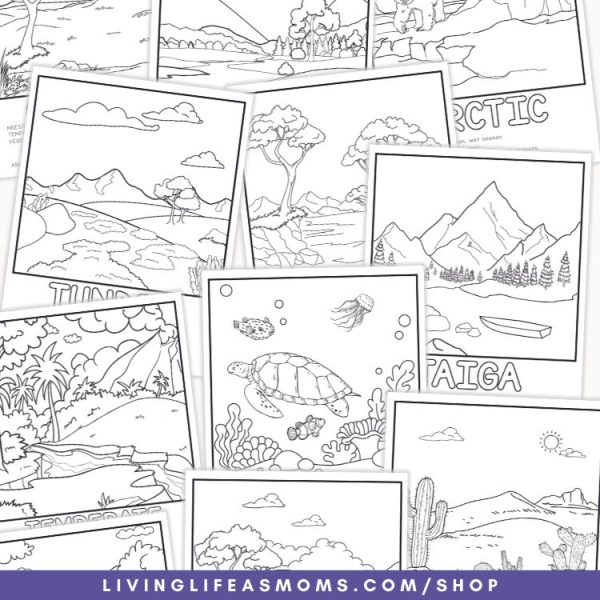
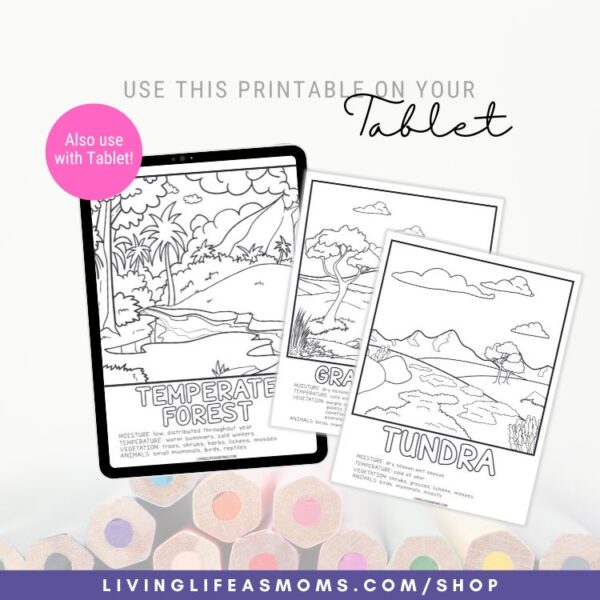
Types of Biomes Coloring Pages for Kids Activity ⛰️
$7.00
- Types of Biomes Coloring Page Activity for Kids
- 10 Pages depicting different environments
- Ideal Study Unit to teach children about the world’s environment
Learning about natural habitats and ecosystems is a great kids’ activity, and using these types of biomes coloring pages is a great way to introduce children to the concept of biomes.
These coloring pages consist of 10 different biogeographical environments that share similar climates and features, known as biomes.
Parents can introduce a single biome at a time to talk about the different environmental species, elements, and locations where these types of biomes can be found.
This study unit is a perfect addition to your child’s Earth Science curriculum for a homeschool program.
Biomes of the World
While the categorizations of Biomes have grown to more than two dozen types, this packet simplifies it down to 10 to help children process the information nicely.
Parents are encouraged to talk about the etymology, classifications, types of plants and animals found in these biogeographical locations, and the effects of human behavior on these natural ecosystems. You can read more about the types of biomes on Wikipedia.
Here is a preview of each type of biome included in this printable coloring page packet.
Grassland Biome
Learn about the Grassy Biome, the environment where grass is the predominant form of vegetation across the landscape. FUN FACT: Grasslands are one of the largest types of biomes in the world, occurring in almost every continent except Antarctica. Grasslands cover approximately one-third to two-thirds of the world’s landscapes.
These grassland environments include natural occurrences, semi-natural, and agriculturally purposed. Also, check out the Grasslands Biome Diorama kit to help your student learn more about this specific biome, from the flora to fauna.
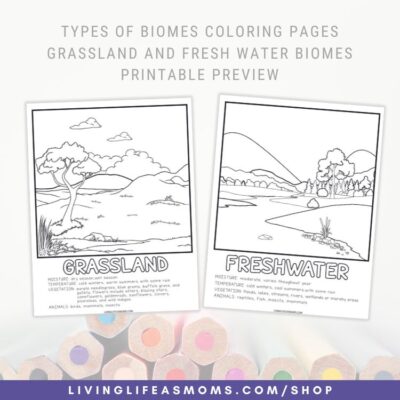
Freshwater Biome
Being that there are over 12 different freshwater sub-biome environments that can be discussed, all of them can be categorized as freshwater biomes.
This specific biome is the most interesting type of biome in the packet to talk about, as water is the most essential element on Earth. Teach your children about the differences in freshwater environments compared to that salt-rich sources of water and why it occurs.
Artic Biome or Polar Biomes
The Arctic biome, also known as the polar domain, is identified as the coldest of the biomes of the world.
This biome is characteristically known for its icy foundations beneath its tundra and barren landscape. The cold prohibits the growth of any permanent vegetative growth. This study unit allows children to learn about this unchartered territory and what areas it encompasses, including the Arctic Ocean, parts of Northern Canada, Alaska, Greenland, Northern Finland, Iceland, Northern Russia, and Sweden.
Some of the most popular wildlife found in this region include seals, caribou, musk oxen, and polar bears.
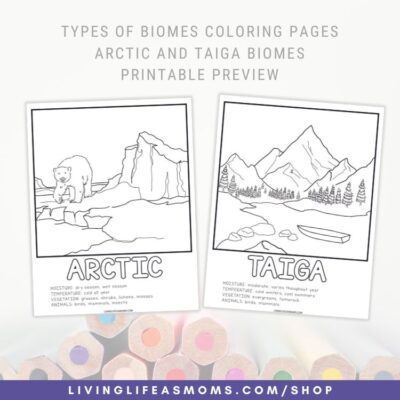
Taiga Biome, Boreal Forest, Snow Forest
The Taiga biome, also referred to as the Boreal Forest or Snow Forest in the Americas, is located in the northernmost parts of North America and Eurasia.
This biome is characterized by its coniferous forest filled with evergreen trees like pines, spruces, and firs. Other species of plants that are found in this environment include mosses, lichens, and shrubs.
The Taiga biome is identified by temperatures that can drop to -50°C (-58 degrees Fahrenheit) in the winter and 20°C (-4 degrees Fahrenheit) during the summer months.
This coloring page allows children to explore this mysterious northern land while learning about its varying environments, wildlife, and plant life.
Tundra Biome
The Tundra biome, as mentioned above, is typically categorized as a treeless mountainous terrain. There is vegetation that grows in these types of landscapes, including drawf shrubs, grasses, mosses, sedges and lichens.
While it is similar to the Arctic biome in that it has a cold climate and barren landscape, this biome is significantly wetter than its Arctic counterpart.
There are several types of Tundra biomes that are further categorized by other landscape features, including Alpine Tundra, Polar Tundra, and Antarctic Tundra. You can teach your children about the different locations where the tundra biome can be found.

Savannah Biome
The Savannah biome is typically found in the warm to hot climate areas of Africa, Thailand, India, South America, and Australia. The Savannah biome composes approximately 20% of the Earth’s landscapes.
In a Savannah landscape, one of the most notable characteristics of the landscape is the widely spread tree cover. Unlike forest-type environments, Savannahs have tree cover that is spread apart, leaving room for the ground to get sunlight as well.
This biome has dry, grassy plains and can be home to a wide variety of wildlife, including zebras, giraffes, wildebeests, antelopes, lions and elephants.
Temperate Forest Biome
The Temperate Forest biome is the second largest type of landscape on the Earth’s surface, with approximately 25% coverage across several continents.
Temperate Forest biomes come in four sub-types which include deciduous (like Oak and Maple trees), coniferous (Pine, Cedar, Fir, and Redwood) mixed forests, and rainforest.
This type of biome is characterized by its relatively mild climate and seasonal changes throughout the year, influencing its plant and animal life.
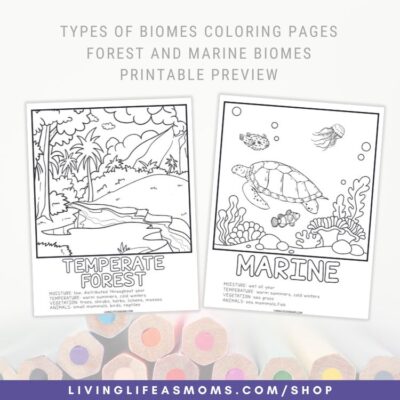
Marine Biomes
The Marine biome is located in the world’s oceans, covering approximately 70% of the Earth’s surface.
This type of biome can be divided into five distinct environments, including coral reefs, estuaries and enclosed seas, intertidal and littoral ecosystems, continental shelves, and deep ocean ecosystems.
The intertidal zone is the area between high and low tide, where salt water meets freshwater.
Land Biome
The Land biome is the most abundant type of biome on Earth, covering approximately 30% of the Earth’s surface. This type of biome includes a wide variety of environments, such as mountains, deserts, and forests.
The land biome is also home to many different types of life forms, including plants, animals, fungi, and bacteria.
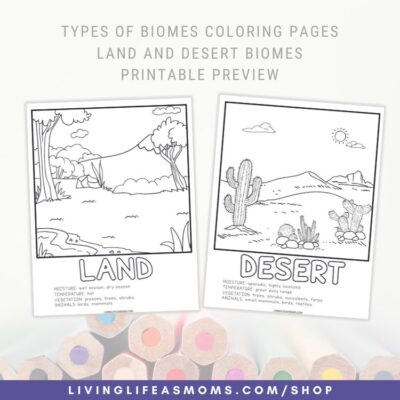
Desert Biome
The Desert biome is located in the dry, arid regions of the world, such as the Sahara desert in Africa and the Mojave desert in North America.
This type of biome is characterized by its hot, dry climate and sparse vegetation.
The lack of rainfall in this environment means that most plants are limited to cacti and succulents like agaves and yuccas.
Printables for Homeschooling
Printables are a great way to bring education home in an easy fashion; not only are you customizing your children’s learning experience, but this will help ensure that your children have a unique learning experience they would otherwise not have.
This Types of Biomes Coloring Pages printable packet is a fun educational study unit for children of all ages, as coloring pages are an all-ages activity.



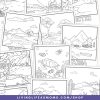


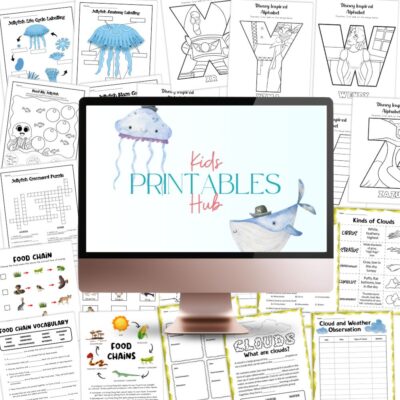


Reviews
There are no reviews yet.